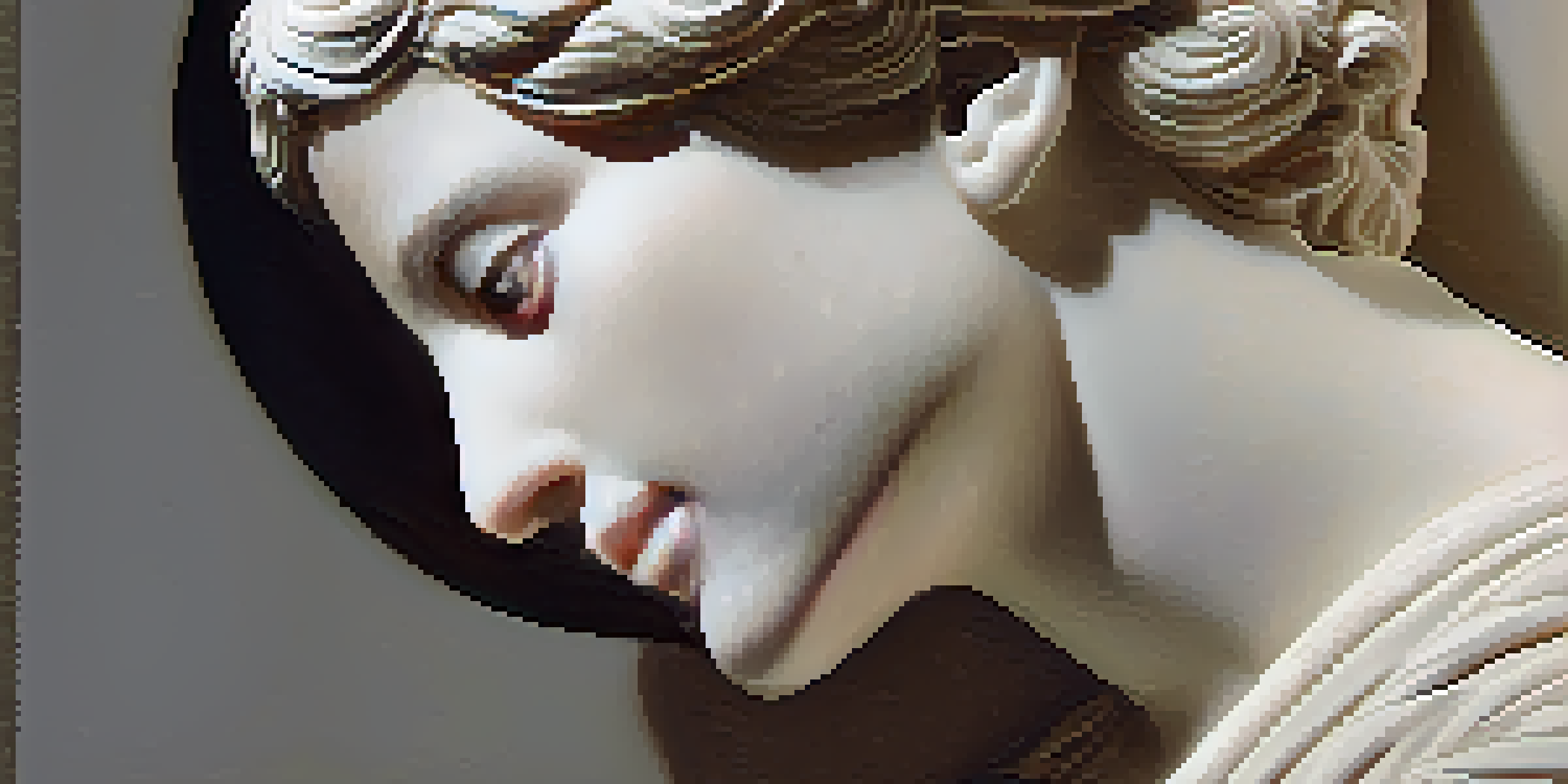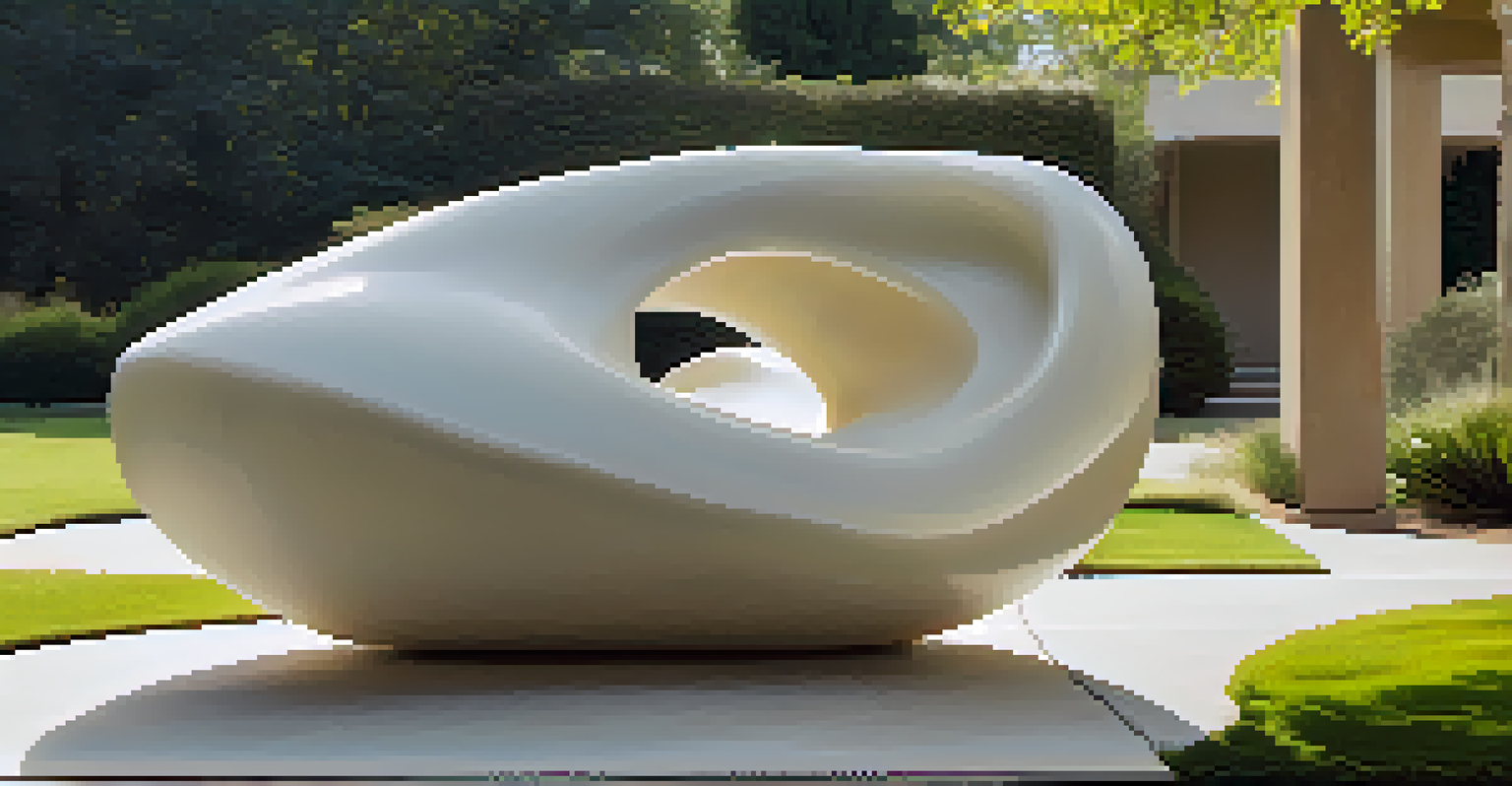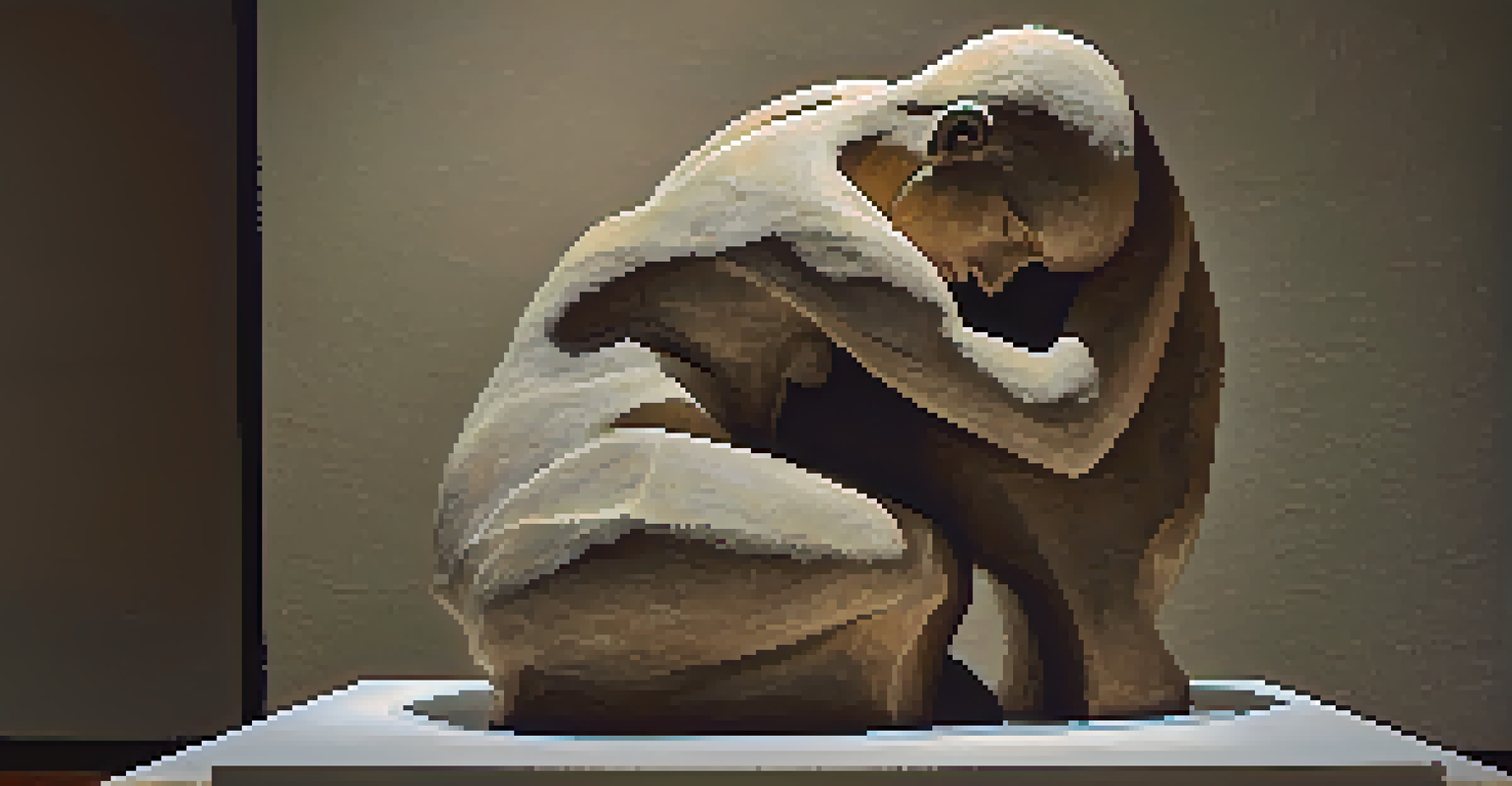Artistic Styles in Stone Carving: From Realism to Abstraction

Understanding Realism in Stone Carving
Realism in stone carving aims to replicate the human form and nature with utmost precision. Artists who embrace this style spend countless hours studying their subjects to capture the finest details, from the texture of skin to the intricate patterns of leaves. A classic example is Michelangelo’s 'David', which showcases a breathtaking level of detail that brings the marble to life. This dedication to realism is not just about technique; it reflects a deep respect for the natural world and the human experience.
Art is the most beautiful of all lies.
The tools used for realistic stone carving are often traditional, including chisels and mallets, which allow for meticulous work. Each strike of the chisel is deliberate, requiring both skill and patience. This craftsmanship often speaks to the time and effort invested by the artist, resulting in pieces that can evoke strong emotional responses from viewers. In this way, realism serves as a bridge between the artist's vision and the audience's interpretation.
While realism remains a dominant style, it also sets the stage for the evolution into more abstract forms. As artists began to explore their creativity beyond strict representation, the boundaries of stone carving expanded. This transition reflects broader artistic movements and societal changes, highlighting how the art form adapts to new ideas and philosophies.
The Shift to Impressionism in Stone Carving
Impressionism in stone carving focuses more on capturing light and movement rather than strict detail. Artists began to work with softer lines and less defined shapes, allowing the viewer's imagination to fill in the gaps. This style mirrors the Impressionist painting movement, where the essence of a subject is emphasized over its precise features. For example, sculptures that evoke a sense of motion or fleeting moments can be seen in works that embrace this style.

The use of different stone types also plays a vital role in impressionistic carvings. Softer stones, like alabaster, can be manipulated to create a more fluid appearance, enhancing the interplay of light and shadow. This approach invites the viewer to experience the artwork dynamically, as it may change in appearance depending on the angle of light. The result is a more engaging interaction between the sculpture and its audience.
Evolution of Stone Carving Styles
Stone carving has transformed from realism to impressionism, expressionism, and abstraction, reflecting changes in artistic vision and societal influences.
As artists ventured into impressionism, they often faced criticism from traditionalists who preferred realism. However, this tension spurred innovation, pushing sculptors to redefine their creative boundaries. The shift from realism to impressionism in stone carving illustrates how artists can challenge conventions and explore new artistic territories.
Exploring Expressionism Through Stone
Expressionism takes a bolder approach, where the emotional experience of the artist is conveyed through the medium. In stone carving, this can manifest as exaggerated forms or distorted figures, emphasizing feelings rather than realistic representation. This style allows artists to express themes of anguish, joy, or existential contemplation, connecting deeply with the viewer’s emotions. The rawness of the stone often enhances this expressiveness, making the artwork feel even more powerful.
The artist is not a special kind of person; every person is a special kind of artist.
One notable example of expressionist stone carving is the works of German sculptor Ernst Barlach, who portrayed profound human emotions through his figures. His carvings often reflect the struggles of humanity, making them resonate strongly with audiences. The tactile nature of stone, combined with expressive forms, creates an experience that transcends the visual, inviting viewers to engage on a deeper emotional level.
Expressionism in stone carving also reflects broader cultural movements, where artists sought to respond to the tumultuous events of their times. The emotional weight carried by these sculptures might echo the societal issues and conflicts of their era, making them not just art but also commentary. This style serves as a reminder that art can be a powerful vehicle for expressing the complexities of the human experience.
The Rise of Abstract Stone Carving
Abstract stone carving moves away from recognizable forms, embracing shapes and patterns that challenge traditional perceptions. Artists in this realm often prioritize the material itself, using the qualities of stone to create a dialogue between form and space. This approach can lead to sculptures that evoke feelings or ideas rather than specific images, inviting viewers to interpret the work in their own way. The beauty of abstraction lies in its ability to provoke thought and emotional responses without a defined subject.
One of the pioneering figures in abstract stone carving is Barbara Hepworth, whose works often integrate organic shapes with a minimalist aesthetic. By focusing on the interplay of light, shadow, and form, Hepworth’s sculptures encourage viewers to engage with the space around them. This emphasis on abstraction can lead to a more personal experience, as each individual may derive different meanings from the same piece.
Cultural Impact on Art Forms
Cultural context shapes stone carving styles, with each era and region contributing unique values and aesthetics that enrich the artistic narrative.
The transition to abstract forms also reflects a broader shift in the art world, where artists began to prioritize experimentation and personal expression. In stone carving, this meant breaking away from established techniques to explore new possibilities. The evolution of abstract stone carving showcases the ongoing dialogue between tradition and innovation in the art form.
The Role of Material in Stone Carving Styles
The type of stone chosen significantly influences the artistic style and final outcome of a sculpture. Different stones, such as marble, granite, or limestone, each have unique properties that can affect how they are carved and perceived. For instance, marble is prized for its fine quality and ability to achieve a high polish, making it ideal for realistic works. Conversely, granite's toughness may lend itself better to abstract forms that emphasize raw, rugged beauty.
Moreover, the color and texture of the stone can also enhance the emotional tone of the piece. A warm-toned stone might evoke feelings of comfort, while cooler tones can suggest serenity or melancholy. Artists often select materials that resonate with their intended message or emotional impact, making the choice of stone a fundamental aspect of the creative process. This relationship between material and meaning is a crucial consideration for any stone carver.
As artists experiment with various stones, they often discover new techniques and styles that push the boundaries of traditional carving. This exploration can lead to innovative forms and expressions in stone, further enriching the art form. Understanding the role of material in stone carving not only highlights the technical aspects of the craft but also underscores the deep connection between artist and medium.
Cultural Influences on Stone Carving Styles
Cultural context plays a vital role in shaping the artistic styles of stone carving across different regions and eras. For example, the ancient Greeks focused on idealized human forms that celebrated beauty and proportion, while the Egyptians often incorporated symbolic elements into their carvings. This cultural significance lends depth to the artworks, making them not just visually striking but also rich in historical narrative. Each culture's values, beliefs, and aesthetics are reflected in their stone carvings, creating a diverse tapestry of artistic expression.
In contemporary times, global influences have led to the fusion of styles and techniques, enriching the art of stone carving. Artists today may draw inspiration from various cultural traditions, blending them into their unique interpretations. This cross-pollination of ideas fosters innovation and challenges the notion of cultural boundaries in art, resulting in dynamic and diverse works that resonate with a broader audience.
Future Trends in Stone Carving
The integration of technology and mixed media is revolutionizing stone carving, opening new possibilities for creativity while preserving traditional techniques.
As stone carving continues to evolve, it remains a reflection of the times and cultures from which it emerges. The interplay between tradition and modernity in stone carving highlights the ongoing dialogue between past and present, reminding us that art is a living, breathing entity that adapts and transforms over time.
The Future of Stone Carving: Innovations and Trends
The future of stone carving is an exciting realm full of potential as artists embrace new technologies and techniques. While traditional methods remain invaluable, advancements in tools and materials are opening up new avenues for creativity. For instance, digital technology allows artists to visualize and plan their works with precision, leading to innovative designs and forms that were previously unattainable. This integration of technology into stone carving is revolutionizing the craft while still honoring its rich history.
Moreover, contemporary artists are increasingly experimenting with mixed media, incorporating other materials like metal or glass into their stone sculptures. This trend not only adds visual complexity but also challenges the conventional definitions of stone carving. By merging different mediums, artists can create dynamic pieces that invite viewers to experience the artwork from multiple perspectives.

As we look to the future, the adaptability of stone carving suggests that it will continue to thrive and evolve. The balance between tradition and innovation will shape the next generation of artists, ensuring that stone carving remains a vital and expressive art form. Ultimately, the journey of stone carving from realism to abstraction reflects a broader narrative about the nature of art itself—constantly changing, yet deeply rooted in human expression.